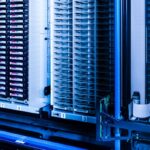Five ways that modern storage can make the IT pro’s life easier
Anyone running on-prem storage for an SMB will know that it is rarely a 9-5 job. Not only can errors and faults occur 24×7, but your users’ working hours will necessarily limit the time window available for essential management jobs, most obviously system backup, meaning that they have to be done out of hours. On top of that, many IT teams live with a significant administration burden. This can be really frustrating when you’d prefer to be working on other things. That’s especially true when those other things are more interesting and creative activities that could potentially bring long-term benefit to the business, or business-related projects that management is pressing you on. Add on the fact that SMBs now need to compete in the digital world, with all its fast-moving demands and opportunities, and it’s clear that ‘business as usual’ is no longer sustainable. That storage admin burden has to go, as it is one of the big things blocking the IT team from having the clarity and focus that it needs in order to properly support key business objectives such as growth and development, security, cost control, and flexibility. Fortunately, storage systems have advanced immensely in recent years – and more importantly, competition and other factors have made it much more difficult for vendors to segment their feature-sets by target market. One result is that features and capabilities which once went only into models aimed at large enterprises, with their deeper pockets and broader skillsets, are now available to SMBs as well. So when you want to get your weekends back – and support your business better into the bargain – what are the areas to think about and the features to look for?
- Performance: Even midrange systems might now be all-flash or disk/flash hybrids, where just a few years ago enterprise flash was too expensive to be more than a tier-zero cache in the biggest and most expensive enterprise storage arrays. As well as the speed boost from the flash element – which is both faster than spinning disk, and adds less latency for random data requests – self-tuning features in the system software continuously optimise the system for best performance.
- Availability: Midrange storage has also gained other enterprise-grade features, such as built-in snapshotting and rapid recovery, plus sophisticated replication and mirroring technology able to operate across different combinations of flash, disk and hybrid storage. All that can minimise both downtime from failure and the downtime needed for system backup. Indeed, if the application mix permits it, it may be possible to reduce the backup window to zero by backing up from a snapshot instead of the live system.
- Automation: More powerful processors enable us to run more advanced software that can provide intelligent and reliable automation, which is essential, because automating the routine stuff is the only real way to manage more with less effort. Indeed, automation is a key element of many recent storage innovations, most notably SDS (software-defined storage), and it means that much that once required manual intervention or scripting can now be automated instead – for example, storage tiering, QoS control and performance tuning.
- Efficiency: Increasing processor power, allied to technologies such as enterprise flash, is also driving efficiency in several areas. The speed and low latency of flash makes it feasible to do inline compression and de-duplication, which means less physical capacity is needed. And flash is denser and less power-hungry than disk, meaning a reduced need for space, power and cooling in the data centre. Other efficiency-booting technologies include thin provisioning, where a newly-created volume takes up only the physical space its data requires – any allocated but unused ‘slack’ capacity is purely virtual.
- Security: The technologies that make inline data reduction practical can also do the same for encryption and decryption – and modern systems allow the data reduction element to be disabled where necessary for compliance. Inline data encryption used to require expensive specialist hardware, but can now be done almost as standard and with little or no impact on performance. Data encryption is increasingly important for SMBs in all areas, as well as for large enterprises, especially with GDPR coming into force in 2018.
All in all, if it’s been a while since you have checked out what’s available in storage on a smaller business’s budget – perhaps because you’ve been too busy keeping the lights on at work – then it is time to look again. You might be surprised at the many ways a modern array will help ease your life – and your stress levels.
Bryan Betts is sadly no longer with us. He worked as an analyst at Freeform Dynamics between July 2016 and February 2024, when he tragically passed away following an unexpected illness. We are proud to continue to host Bryan’s work as a tribute to his great contribution to the IT industry.






Have You Read This?
From Barcode Scanning to Smart Data Capture
Beyond the Barcode: Smart Data Capture
The Evolving Role of Converged Infrastructure in Modern IT
Evaluating the Potential of Hyper-Converged Storage
Kubernetes as an enterprise multi-cloud enabler
A CX perspective on the Contact Centre
Automation of SAP Master Data Management
Tackling the software skills crunch